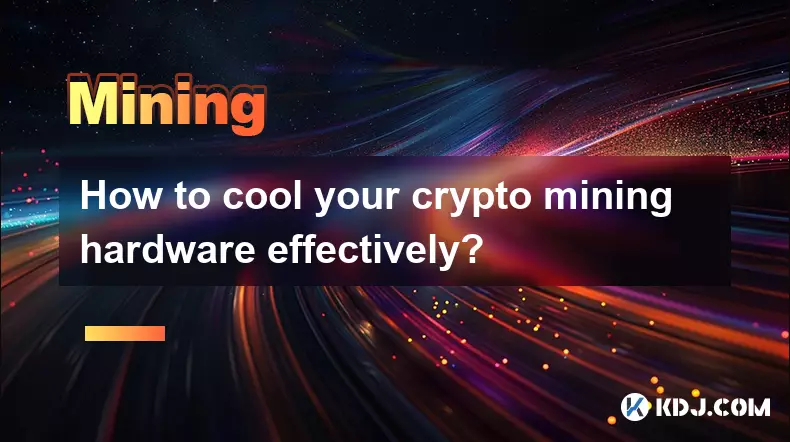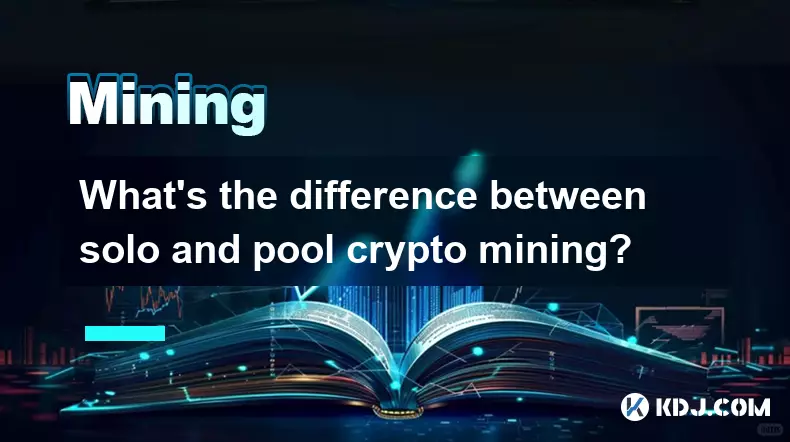-
 Bitcoin
Bitcoin $108400
-0.04% -
 Ethereum
Ethereum $4401
-1.17% -
 Tether USDt
Tether USDt $0.9999
-0.02% -
 XRP
XRP $2.788
-1.01% -
 BNB
BNB $852.8
-0.55% -
 Solana
Solana $199.0
-2.08% -
 USDC
USDC $0.9997
-0.01% -
 Dogecoin
Dogecoin $0.2160
-0.19% -
 TRON
TRON $0.3385
-0.98% -
 Cardano
Cardano $0.8257
0.85% -
 Chainlink
Chainlink $23.37
-0.91% -
 Hyperliquid
Hyperliquid $44.77
1.06% -
 Ethena USDe
Ethena USDe $1.001
0.00% -
 Sui
Sui $3.277
-0.57% -
 Stellar
Stellar $0.3585
0.16% -
 Bitcoin Cash
Bitcoin Cash $545.3
-0.50% -
 Avalanche
Avalanche $23.93
0.28% -
 Cronos
Cronos $0.2792
-3.99% -
 Hedera
Hedera $0.2197
-2.00% -
 UNUS SED LEO
UNUS SED LEO $9.609
0.29% -
 Litecoin
Litecoin $109.6
-1.26% -
 Toncoin
Toncoin $3.133
-0.16% -
 Shiba Inu
Shiba Inu $0.00001229
-0.54% -
 Polkadot
Polkadot $3.784
-0.20% -
 Uniswap
Uniswap $9.596
-1.94% -
 Dai
Dai $0.0000
0.01% -
 Bitget Token
Bitget Token $4.545
-0.26% -
 Monero
Monero $266.5
2.05% -
 Aave
Aave $311.6
-2.74% -
 Ethena
Ethena $0.6363
-4.26%
Can I use a laptop for part-time cryptocurrency mining?
Mining cryptocurrency on a laptop is possible but inefficient and risky, often leading to overheating, hardware damage, and electricity costs that exceed earnings.
Sep 01, 2025 at 03:56 am

Feasibility of Using a Laptop for Cryptocurrency Mining
1. Modern laptops are designed for efficiency and portability, not high-intensity computational tasks. While technically possible, mining cryptocurrencies on a laptop is far from optimal. The processing power of most laptop CPUs and integrated GPUs lacks the capability to compete with dedicated mining hardware like ASICs or high-end GPUs.
2. Mining requires continuous operation, often running 24/7 to generate meaningful returns. Laptops are not built to handle sustained thermal loads. Prolonged mining can cause overheating, leading to thermal throttling, reduced performance, and permanent hardware degradation.
3. The energy consumption relative to the output makes laptop mining economically inefficient. Electricity costs may exceed the value of mined coins, especially with proof-of-work cryptocurrencies that demand high hash rates. Most miners using consumer-grade laptops end up with negative net gains.
4. Many cryptocurrencies have evolved to resist CPU-based mining to prevent centralization and promote fairness. Algorithms like Ethash (formerly used by Ethereum) and RandomX favor GPU or ASIC mining, further reducing the viability of laptop-based operations.
5. Some privacy-focused coins like Monero (XMR) still allow CPU mining, making them a more suitable option for laptops. However, even in these cases, the rewards are minimal and require extended periods to accumulate any substantial amount.
Risks Associated with Laptop Mining
1. Heat buildup is the most immediate threat. Laptops have limited cooling capacity, and mining pushes components to their limits. This can warp internal structures, damage solder joints, and degrade battery life rapidly.
2. Fan wear and tear increases significantly. Constant high-speed operation shortens the lifespan of cooling fans, leading to louder operation and eventual failure. Once the cooling system fails, the risk of sudden shutdowns or hardware damage rises.
3. Permanent damage to the motherboard or GPU can occur due to voltage fluctuations and thermal stress. Repair costs often surpass any potential mining profits, making recovery uneconomical.4. Battery health deteriorates quickly when the system runs at full load while plugged in. Lithium-ion batteries degrade faster under high temperatures, reducing overall battery capacity and lifespan even if used normally afterward.
5. Warranty voidance is common. Manufacturers typically exclude damage caused by overclocking or excessive usage from warranty coverage. Engaging in mining activities may invalidate any existing protection on the device.
Alternative Approaches for Part-Time Earnings in Crypto
1. Instead of mining, users can participate in staking programs offered by proof-of-stake blockchains. By holding and locking certain cryptocurrencies like Cardano (ADA) or Solana (SOL), individuals earn rewards without requiring powerful hardware.
2. Running lightweight node software on a laptop is another option. Some networks incentivize users to maintain decentralized infrastructure by offering small token rewards for relaying transactions or validating data.
3. Cloud mining services allow access to remote mining rigs without owning physical equipment. While risky due to scams, reputable platforms provide a way to earn hash power without damaging personal devices.4. Participating in decentralized finance (DeFi) protocols enables users to lend or provide liquidity in exchange for yield. These activities run on blockchain smart contracts and only require a secure wallet and internet connection.
5. Completing microtasks on blockchain-based platforms such as Brave Browser or Honeygain can generate passive income. These applications utilize idle bandwidth or browsing data to reward users in cryptocurrency.
Frequently Asked Questions
Q: Can I mine Monero safely on my laptop?A: While Monero is CPU-minable and doesn't require specialized hardware, doing so on a laptop still risks overheating and hardware strain. Limiting mining intensity and ensuring proper ventilation may reduce risks, but long-term use is discouraged.
Q: Does mining on a laptop drain the battery quickly?A: Yes, mining consumes maximum system resources, leading to rapid battery depletion. Even when plugged in, the battery may degrade due to heat exposure, reducing its overall lifespan.
Q: Are there any cryptocurrencies designed for low-power devices?A: Some projects like IOTA or Nano focus on energy-efficient consensus mechanisms that don’t rely on mining. These networks use directed acyclic graphs (DAGs) and require minimal computational effort, making them more suitable for lightweight devices.
Q: Can I use a gaming laptop for mining?A: Gaming laptops have better cooling and more powerful GPUs, making them more capable than standard models. However, they still fall short compared to desktop setups and face similar thermal and wear-related issues when used continuously for mining.
Disclaimer:info@kdj.com
The information provided is not trading advice. kdj.com does not assume any responsibility for any investments made based on the information provided in this article. Cryptocurrencies are highly volatile and it is highly recommended that you invest with caution after thorough research!
If you believe that the content used on this website infringes your copyright, please contact us immediately (info@kdj.com) and we will delete it promptly.
- Memecoins September 2025 Watchlist: What's Hot Now?
- 2025-08-31 23:25:15
- Eric Trump Predicts Bitcoin to $1 Million: Hype or Reality?
- 2025-08-31 23:25:15
- BlockDAG: Redefining Scalability and ROI Potential in 2025
- 2025-08-31 23:05:16
- Ozak AI, Altcoins, and 20x Potential: Navigating the Crypto Landscape
- 2025-09-01 00:05:12
- Bonk Price, Solana Meme Coin, and the Rise of Layer Brett: A New Era?
- 2025-08-31 21:25:12
- ETH Transactions Soar, BTC Whale Shifts Gears: Decoding August's Crypto Charts
- 2025-08-31 21:05:16
Related knowledge

Can I use a laptop for part-time cryptocurrency mining?
Sep 01,2025 at 03:56am
Feasibility of Using a Laptop for Cryptocurrency Mining1. Modern laptops are designed for efficiency and portability, not high-intensity computational...

How to calculate the profitability of your crypto mining setup?
Aug 29,2025 at 10:15am
Understanding the Core Components of Mining Profitability1. The first step in evaluating mining profitability involves identifying the hash rate of yo...

How to cool your crypto mining hardware effectively?
Aug 29,2025 at 07:56am
Optimizing Airflow for Maximum Heat Dissipation1. Positioning mining rigs in areas with unrestricted airflow is essential to prevent heat buildup. Ens...

What are the essential components for a DIY crypto mining rig?
Aug 29,2025 at 08:14am
Core Hardware Requirements for Building a Mining Rig1. A powerful graphics processing unit (GPU) is the heart of any DIY mining setup. Models like the...

How to mine Monero using your computer's CPU?
Aug 30,2025 at 06:56am
Mining Monero with Your CPU: A Practical GuideMonero (XMR) remains one of the most accessible cryptocurrencies for individuals looking to mine using c...

What's the difference between solo and pool crypto mining?
Aug 29,2025 at 02:14am
Solo Mining: Independence and Full Control1. Solo mining refers to the process where an individual miner uses their own computational resources to sol...

Can I use a laptop for part-time cryptocurrency mining?
Sep 01,2025 at 03:56am
Feasibility of Using a Laptop for Cryptocurrency Mining1. Modern laptops are designed for efficiency and portability, not high-intensity computational...

How to calculate the profitability of your crypto mining setup?
Aug 29,2025 at 10:15am
Understanding the Core Components of Mining Profitability1. The first step in evaluating mining profitability involves identifying the hash rate of yo...

How to cool your crypto mining hardware effectively?
Aug 29,2025 at 07:56am
Optimizing Airflow for Maximum Heat Dissipation1. Positioning mining rigs in areas with unrestricted airflow is essential to prevent heat buildup. Ens...

What are the essential components for a DIY crypto mining rig?
Aug 29,2025 at 08:14am
Core Hardware Requirements for Building a Mining Rig1. A powerful graphics processing unit (GPU) is the heart of any DIY mining setup. Models like the...

How to mine Monero using your computer's CPU?
Aug 30,2025 at 06:56am
Mining Monero with Your CPU: A Practical GuideMonero (XMR) remains one of the most accessible cryptocurrencies for individuals looking to mine using c...

What's the difference between solo and pool crypto mining?
Aug 29,2025 at 02:14am
Solo Mining: Independence and Full Control1. Solo mining refers to the process where an individual miner uses their own computational resources to sol...
See all articles

























































































